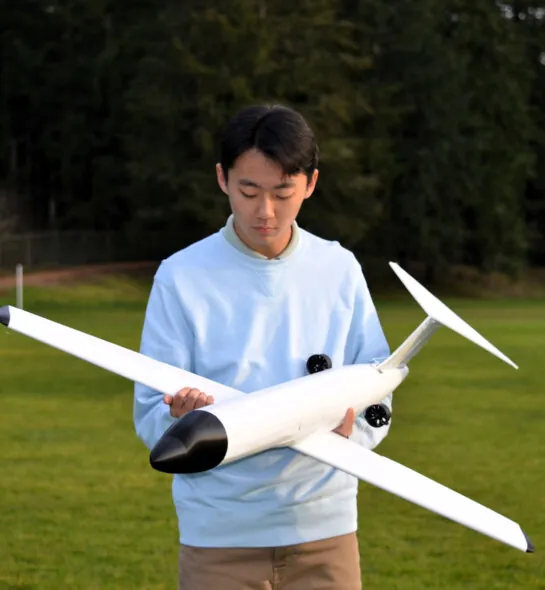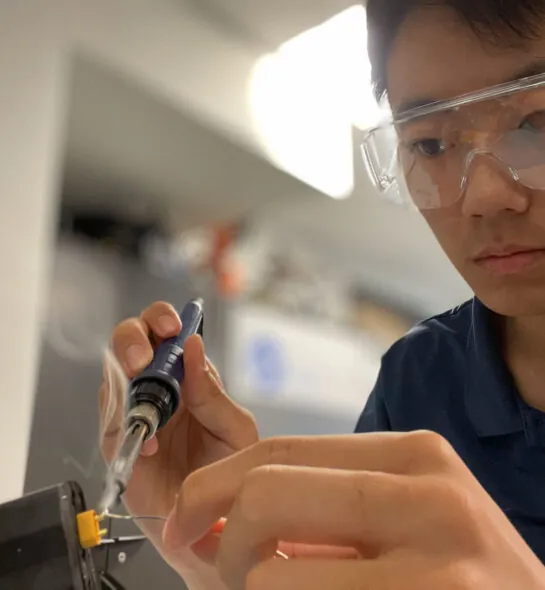Deeper Dive
I have always been captivated by flight. As a kid, I would chase birds to try to get a close-up understanding of how they flew. After watching online videos, I began building and flying model airplanes, experimenting with everything from gliders to flying wings. Over time, my designs became more formalized engineering projects, as I searched for ways to make aircraft more capable and efficient.
Eventually, I came across an old, largely forgotten design called the oblique wing. NASA had investigated the design in the 1970s, finding significant improvements in efficiency, but budget cuts ended the program before its stability and control problems could be resolved. After decades of little to no oblique-wing research, I reasoned that advances in technology justified a reinvestigation. Drawing on my experience with radio-controlled airplanes and my self-taught science and engineering knowledge, I built and tested a computerized oblique-wing model airplane to address its stability and control problems, thereby unlocking its fuel efficiency potential. My study demonstrated a significant reduction in the control challenges that had previously hindered the oblique wing, bringing the design closer to reality.
The improvement in fuel efficiency is particularly significant for the commercial aviation sector. Air travel currently accounts for about 14% of global transportation emissions, and reducing fuel usage would substantially improve aviation’s sustainability. In addition, airlines operate on tight budget margins, and because fuel is such a significant expenditure, even a 1–2% improvement in efficiency is worth billions of dollars in research and development. The oblique wing in my study showed potential efficiency gains of up to about 9%, reviving this overlooked design as a promising alternative for fuel-efficient aircraft and making the case for renewed research.
My work demonstrates a potential path to improved aircraft efficiency. Greater efficiency enhances performance, allowing airplanes to fly faster and farther while consuming less fuel. This makes aircraft more capable in commercial aviation, transportation, and other sectors. It also reduces fuel expenditures, improves the environmental impact of aviation, and minimizes noise pollution around airports.



